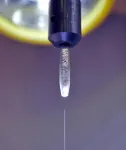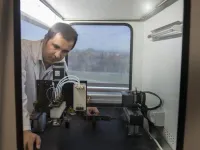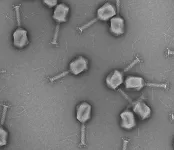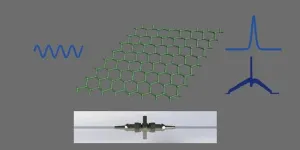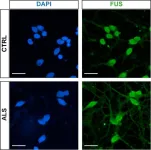(Press-News.org) DALLAS, July 21, 2023 — More than 100 scientists from across the U.S. are receiving special grants to support their research work in finding innovative solutions to fight heart disease and stroke. The grants, totaling $20 million, are part of the Second Century of Science Initiative of the American Heart Association, the world’s leading voluntary organization dedicated to a world of longer, healthier lives. The financial awards are announced as the Association, the largest non-government supporter of heart and brain health research in the U.S., prepares to celebrate its 100th anniversary in 2024 and will be funded for a three-year period from July 1, 2023 through June 30, 2026.
“When the American Heart Association was founded in 1924, heart disease was considered a death sentence and we knew even less about stroke and other types of cardiovascular diseases. It has only been through the dedication and passion of the thousands of scientific explorers who have come before us that we have learned so much about how to diagnose, treat and even prevent most of these conditions,” said Joseph C. Wu, M.D., Ph.D., FAHA, American Heart Association volunteer president, who is the director of the Stanford Cardiovascular Institute and the Simon H. Stertzer, M.D., Professor of Medicine & Radiology at the Stanford University School of Medicine. “Yet too many lives are still lost as these continue to be the leading causes of death around the world. Even with all the knowledge we have there are gaps, particularly in ensuring health and the delivery of health care for people in diverse and underrepresented populations. That is why research projects like the Second Century of Science Initiative are so important for our future.”
A total of 111 separate grants have been awarded in three different categories:
AHA’s Second Century Implementation Science Award – 19 early- and mid-career investigators will each receive a total of $400,000 to further their research into groundbreaking strategies that can be implemented into clinical and community settings to ultimately improve the health of individuals and populations. These research projects may address policies, programs or individual clinical practice, with unique strategies to address critical barriers to or gaps in ensuring the health and well-being of all people.
AHA’s Second Century Early Faculty Independence Award – 33 investigators in the early years of their first professional medical/research academic appointment will each receive a total of $300,000 for research focused on critical, emerging priorities of the next century. Those areas may include technology-driven health care and diagnostics (i.e., artificial intelligence/machine learning approaches, telemedicine, biosensors and wearables); novel and emerging therapeutics (i.e., genome editing therapies, regenerative therapies and bioengineered foods); environmental impacts on health (i.e., direct and indirect effects); and research and solutions for issues affecting aging populations and the shrinking health care workforce. Awardees will also have opportunities to serve on scientific and research councils and committees of the American Heart Association and engage with the Association’s scientific leadership for mentorship connections.
Clinical Fellow Research Education Program – Directors of 59 accredited cardiology and neurology fellowship programs will receive funding to support training and mentoring opportunities for clinical fellows enrolled in their programs. A fellow is a medical doctor or a doctoral-level health professional who has completed their degree and general residency program and is now training or conducting research in a health specialty. The funding will allow up to five fellows per year from each program to attend the American Heart Association Scientific Sessions or the American Heart Association/American Stroke Association International Stroke Conference, as well engage in as other medical specialty events and activities that will help them gain knowledge and expertise as research scientists.
“Research has been the foundation of the American Heart Association from the beginning, and we recognize that scientific research continues to be our most critical path forward to ensuring longer, healthier lives for all,” said Mariell Jessup, M.D., FAHA, chief science and medical officer of the Association. “As we embark on our next century of lifesaving work, we are excited to support bold, innovative investigators like those leading this new initiative, to meet the challenges of today and of the future.”
The American Heart Association has funded more than $5 billion in cardiovascular, cerebrovascular and brain health research since 1949, making it the single largest non-government supporter of heart and brain health research in the U.S. New knowledge resulting from this funding benefits millions of lives in every corner of the U.S. and around the world.
About the American Heart Association
The American Heart Association is a relentless force for a world of longer, healthier lives. We are dedicated to ensuring equitable health in all communities. Through collaboration with numerous organizations, and powered by millions of volunteers, we fund innovative research, advocate for the public’s health and share lifesaving resources. The Dallas-based organization has been a leading source of health information for nearly a century. Connect with us on heart.org, Facebook, Twitter or by calling 1-800-AHA-USA1.
###
END
$20 million awarded to lead next century of heart disease and stroke scientific research
The American Heart Association’s Second Century of Science initiative will support more than 100 scientific researchers in their work to find new ways to fight the world’s leading causes of death
2023-07-21
ELSE PRESS RELEASES FROM THIS DATE:
BESSY II: Surface analysis of catalyst particles in aqueous solutions
2023-07-21
Green hydrogen can be produced directly in a photoelectrochemical cell, splitting water with solar energy. However, this requires the development of super-efficient photoelectrodes that need to combine many talents at the same time: They must be excellent at converting sunlight into electricity, remain stable in acidic or basic water, act as catalysts to promote the splitting of water into hydrogen and oxygen, and be cheap, abundant and non-toxic. The large material class of metal oxides comes into question. However, it is difficult to find out what really happens at the interfaces ...
Study: How mother and infant sleep patterns interact during the first two years of life
2023-07-21
URBANA, Ill. — New mothers can expect sleep deprivation in the first few years of baby’s life. But too little sleep can take a toll on the health of both mother and child. A new study from the University of Illinois Urbana-Champaign looks at maternal and infant sleep patterns, identifying predictors and providing recommendations for instilling healthy habits.
“The first two years is a really critical period where a lot of development is going on, and sleep is important for health. We wanted to look at the association of mother and infant sleep and whether it changes over time,” said Tianying ...
Contribution of cultural heritage values to steppe conservation on ancient burial mounds of Eurasia
2023-07-21
During our history, ancient civilisations have considerably shaped the global ecosystems through a coevolution of landscape and local populations. In some cases, the legacy of the disappeared civilizations is still visible in the form of buildings and other monuments such as the Stonehenge, the buildings of the Roman and Hellenic Empires, and ancient burial places and fortresses built by several cultures. These monuments are invaluable parts of our history and cultural heritage. Although it is often not in the spotlight, they can also hold a considerable biodiversity conservation potential.
In the vast steppes of Eurasia (and probably ...
NIH grant to facilitate high-speed bioprinting of bones, tracheas, organs
2023-07-21
UNIVERSITY PARK, Pa. — Developing technology to quickly and efficiently bioprint human tissues at scale is the goal of a new project led by Penn State researchers. When fully developed, the technology will be the first to enable the fabrication of scalable, native tissues such as bones, tracheas and organs.
The National Institute of Biomedical Imaging and Engineering at the National Institute of Health has awarded over $2 million in support of the project, led by Ibrahim T. Ozbolat, professor of engineering science and mechanics, biomedical engineering, and neurosurgery at Penn State.
“This will be a platform technology, which can be used for multiple purposes,” ...
Penn State researchers examine how environmental chemicals affect gut microbiome
2023-07-21
UNIVERSITY PARK, Pa. — Worldwide, high rates of obesity and other inflammatory conditions are associated with increased risk for cancer, cardiovascular disease and type 2 diabetes. Investigating how environmental chemical exposure impacts the gut microbiome to exacerbate these conditions is the goal of a new $7 million grant awarded to Andrew Patterson, professor of molecular toxicology and the John T. and Paige S. Smith Professor in the College of Agricultural Sciences.
The National Institute of Environmental Health Sciences, part of the National ...
Treating bladder infections with viruses
2023-07-21
About one in two women are affected by cystitis during her lifetime, and many suffer from recurrent urinary tract infections. Bladder infections are not only painful and potentially dangerous, but they also pose a significant dilemma for physicians. With antibiotic resistance becoming widespread in urinary tract infections and continually increasing, physicians are often forced to blindly prescribe antibiotics without knowing their effectiveness against the pathogen causing the infection. This is because it takes several days to identify a specific ...
Two types of ultrafast mode-locking operations generation from an Er-doped fiber laser based on germanene nanosheets
2023-07-21
Saturable absorbers as passive modulators in passively mode-locked fiber lasers play a crucial role in the generation of ultrashort pulses. Germanene, a graphene-like two-dimensional material with fast carrier relaxation time and large nonlinear absorption coefficient comparable to that of graphene, is a saturable absorber material with very fast response.
Researchers led by Prof. Wei Xia at University of Jinan (UJN), are interested in modulation switches in fiber lasers, and two-dimensional material saturable absorbers have been a hot research topic in recent years. Two-dimensional materials make up for the disadvantages of ...
Trends in the prevalence of hepatitis C infection during pregnancy and maternal-infant outcomeTrends in the prevalence of hepatitis C infection during pregnancy and maternal-infant outcomes
2023-07-21
About The Study: This study of more than 70 million births or spontaneous abortions showed the prevalence of hepatitis C (HCV)-positive pregnancies in the U.S. increased 16-fold between 1998 and 2018. Maternal HCV infection was associated with increased odds of preterm labor, poor fetal growth, or fetal distress. These data may support recent recommendations for universal HCV screening with each pregnancy.
Authors: Po-Hung Chen, M.D., Ph.D., of the Johns Hopkins University School of Medicine in Baltimore, ...
Association between cervical cancer screening guidelines and preterm delivery
2023-07-21
About The Study: The findings of this study of births to females ages 18 to 24 suggest that additional recommended cervical cancer screenings before birth were associated with an increased risk of preterm delivery. Cervical cancer screening guidelines should consider the downstream implications for preterm delivery risk when weighing the population-level costs of screenings against the benefits of reduced cervical cancer mortality.
Authors: Rebecca Bromley-Dulfano, M.S., of Harvard University Medical School in Cambridge, Massachusetts, is the corresponding author.
To ...
Research reveals the scale of disorder underpinning Motor Neurone Disease
2023-07-21
Francis Crick Institute press release
Under strict embargo: 16:00hrs BST 21 July 2023
Peer reviewed
Experimental study
Cells
Research reveals the scale of disorder underpinning Motor Neurone Disease
Researchers at the Francis Crick Institute and UCL have shown that hundreds of proteins and mRNA molecules are found in the wrong place in nerve cells affected by Motor Neuron Disease (MND), also known as Amyotrophic Lateral Sclerosis (ALS).
ALS is a rapidly progressing and devastating condition that causes paralysis by affecting ...
LAST 30 PRESS RELEASES:
Research on the behavioral mechanisms of rural distributed photovoltaic development: A view of prosumer perspective
More surgical patients are on opioid use disorder medications — hospitals must modernize pain care
New study reveals strategic logic behind global patent litigation venue selection
An abnormally slow heart rate is associated with xylazine-fentanyl overdose; primarily seen in northeastern United States
The path to solar weather forecasts
Inflammation and mitochondrial dysfunction in cirrhotic cardiomyopathy: therapeutic implications
The Great Bear Rainforest nature writing retreat
Research reveals hidden diversity of E. coli driving diabetic foot infections
Breakthrough in parallel Cartesian grid generation: Dynamic partition weight strategy resolves load imbalance
ESMT Berlin study shows how startups can communicate to win over silent audiences online
Design and optimization of wide-speed double swept waverider based on curved-cone projection method
Giant Magellan Telescope names Daniel T. Jaffe as president
New parameterization method for cislunar space cataloging enhances orbital awareness in Earth-Moon system
A “nu” way to measure researcher impact
Dark matter may have begun much hotter than scientists thought
Board games boost young kids’ math skills, UO research review shows
Unleashing floods: Researchers learn more about how fossils form
An open-source robotic system to perform cell culture tasks
Fathers’ health influences offspring through sperm RNAs
Korea University study mimics heart mechanics in organoids using three-dimensional magnetic torque
Catching a radical in motion with µSR spectroscopy
Hanbat National University researchers reveal smart transparent woods that block UV and save energy
Rhythm contains important information for the cell
Nitrogen is key to faster regrowth in deforested areas, say researchers
Recovering tropical forests grow back nearly twice as fast with nitrogen
A new diet option for mild-to-moderate Crohn’s disease
Electric vehicles could catch on in Africa sooner than expected
New test could help pinpoint IBD diagnosis, study finds
Common eye ointment can damage glaucoma implants, study warns
ACCESS-AD: a new European initiative to accelerate timely and equitable AD diagnosis, treatment and care
[Press-News.org] $20 million awarded to lead next century of heart disease and stroke scientific researchThe American Heart Association’s Second Century of Science initiative will support more than 100 scientific researchers in their work to find new ways to fight the world’s leading causes of death
